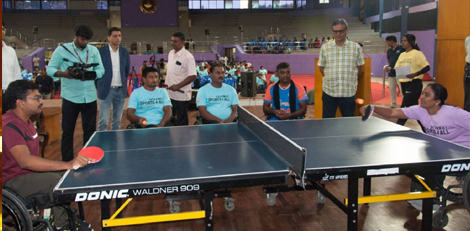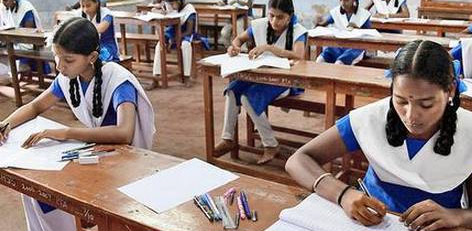Invention by Chennai School students: Only if the helmet is worn, the vehicle will start
Posted on: 29/Jan/2016 4:32:58 PM

Chennai School students have created a new helmet which will help start the vehicle only if it is worn on the head.
The courts have made wearing helmets compulsory while driving 2-wheelers after it was clearly established that more lives are lost in accidents causing head injuries.
However, most of the 2-wheeler drivers have not realised the importance of wearing helmets and continue to drive without wearing them sometimes keeping them by the side while some of them lose their lives in accidents because of this.
Chennai School students have found a solution for this issue.They have come up with a new helmet that will help start the vehicle only after it is worn on the head. Without wearing this, one cannot start the vehicle.
The students of 11th Standard in Chennai Perambur Kaligi Ranganathan Montford Higher Secondary School, M. Jayakumar, S. Sriram, 10th Standard students J. Pooja have joined to make this new head-gear.
They have installed a small sensor in this new head-gear and a receiver in the vehicle. The sensor fitted in the head-gear will transmit the signal to start the vehicle only after it is worn on the head. This sensor can be used to start other vehicles as well by sharing it with the help of blue-tooth.
This sensor-receiver combination can also control the light intensity of the head-lights of the vehicle.
When the headlights of the oncoming vehicles fall on this vehicle`s head-lights, the intensity of the light will get automatically reduced.
The students also shared information that most accidents are caused due to high-intensity head-lights. Hence, if facing vehicle have their vehicles intensity of head-lights gets reduced, a lot of accidents may be prevented. This head-gear costs Rs.2000/- currently. However, if it is manufactured on large scales, the price will come down drastically.They have applied for patents. They have also appealed to the government to get this new head-gear installed in all the vehicles.
In the technology fair conducted in VIT (Vellore Institute of Technology 2 months ago, participated by 1400 students, this new helmetr won the 1st Prize.







